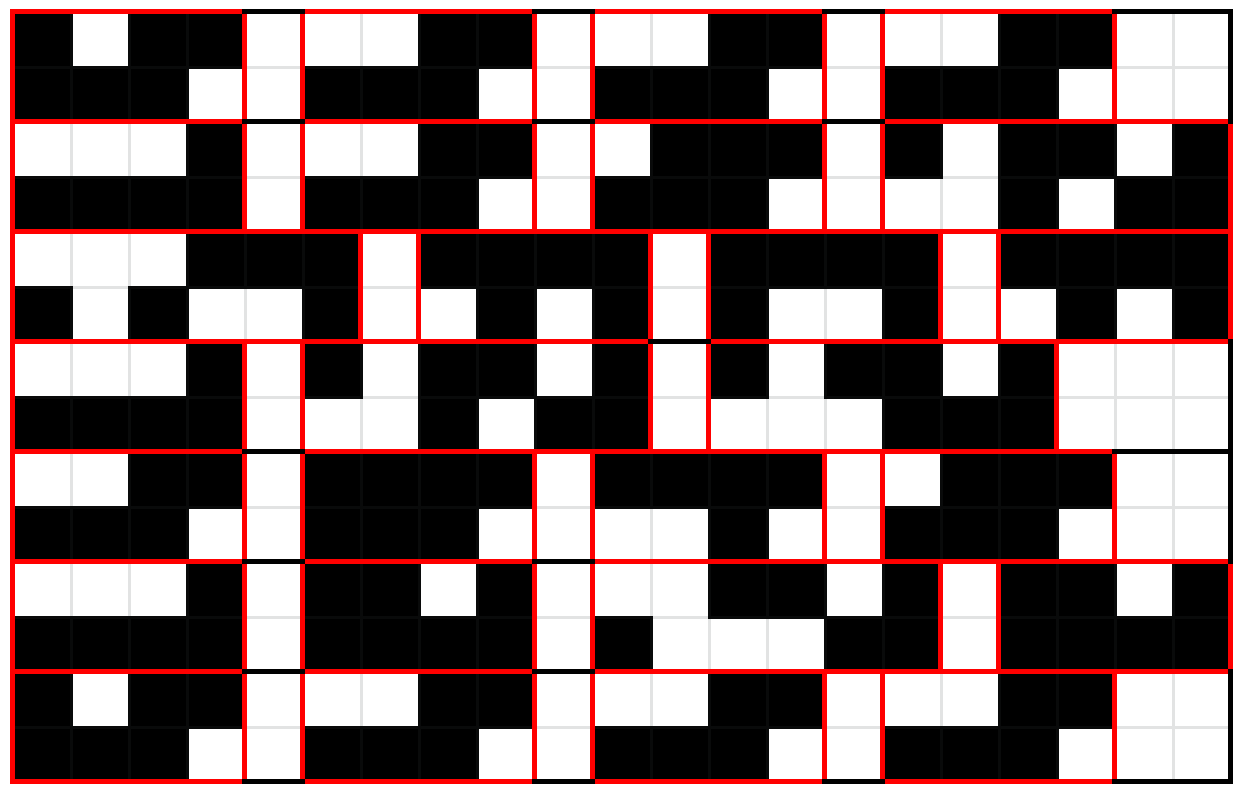Solution: New York Counterpoint
Answer: SIGNALS
Written by Sam Lam
The first step is to solve the nonogram.

The next insight is that the the nonogram can be read with New York Point, a system of tactile writing. The flavor text also clues Bach’s The Well-Tempered Clavier, which indicates that you should translate the nonogram into notes using the New York Point system. Each note is bordered in red above.
Each line of notes in the nonogram (every two rows), clues the first few notes of one the Clavier’s fugues, of which there are 24 in the first Book.
Using the numbers as an index into the alphabet gives: SIGNALS
| Notes | Fugue No. | Letter |
|---|---|---|
| A(8) rest(8) rest(8) rest(8) | 19 (A major) | S |
| rest(4) rest(8) E(8) F♯(4) | 9 (E major) | I |
| B♭(16) G(16) F(16) G(16) | 7 (E♭ major) | G |
| rest(4) F♯(4) G♯(4) | 14 (F♯ minor) | N |
| rest(8) C(8) D(8) E(8) | 1 (C major) | A |
| rest(4) C(4) D♭(4) C(4) | 12 (F minor) | L |
| A(8) rest(8) rest(8) rest(8) | 19 (A major) | S |
Author’s Notes
During a Wikipedia rabbit hole dive, I came across New York Point. Immediately upon finding out that it could be used to notate music, I knew I had to write a puzzle based on it. The nonogram came naturally, and the Bach reference came about because I noticed the phrase "New York Point" sounded a lot like the Steve Reich composition New York Counterpoint. Bach being famous for his counterpoint, I figured his famous set of 24 Preludes and Fugues in Book I of the Well-Tempered Clavier would make for an excellent extraction. The little bit of wordplay was too good to pass up, but the reliance on solvers to understand to look up New York Point from so little may have been asking for much.